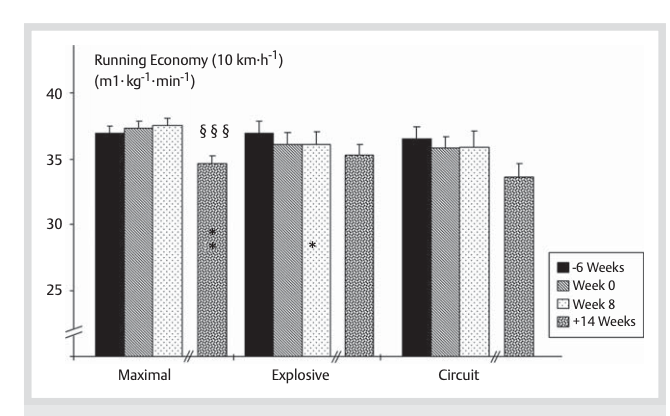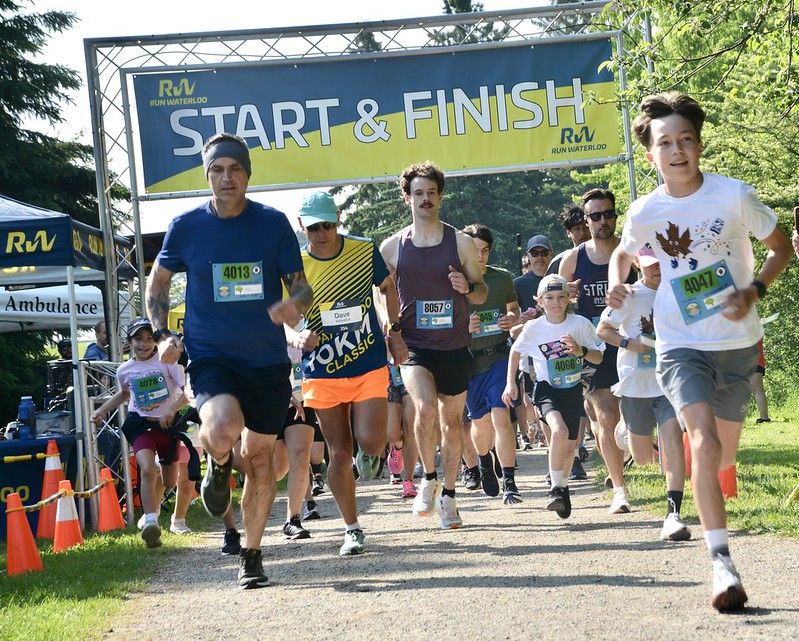Welcome back to my series on strength training for endurance athletes. My last article took a look at the role (or lack there of) of strength training and our ability to consume oxygen.
That being said, we still know that strength training does have a positive impact on performance in endurance athletes. The caveat: it has to be the right type of athlete, with the right type of deficiency conducting it at the right time in training.
So how do we decide how and when to implement strength training? Learning the science of how it impacts us helps to guide these decisions in the best possible way. This series most definitely is not a clear-cut, quick-fix answer, nor is it remotely all inclusive. The more you learn, the more you will realize there is to learn! Heck, I went to school for 8 years after high school in human-physiology related fields followed by 10 years in working and coaching in the field- and I definitely still feel like the more I learn, the more confusing it can become at times!
That being said, the more information you arm yourself with, the more you will be able to start to tell the difference between pseudoscientific advice and real, efficient and effective performance-boosting advice. Our next step toward this direction: How it impacts our exercise economy.

Exercise Economy:
In this article, we are going to explore the impact of strength training on exercise economy. As many of you know, exercise economy is a measure of how efficiently the oxygen you bring in translates into forward movement in whatever sport you are doing.
There are a number of ways to negatively and positively impact running economy. For instance, trying to deviate from your natural stride will likely make you less economical as I’ve written about HERE. There are even fun little tricks like how warming up with a weighted vest can improving your running economy short term as I wrote about HERE.
It’s also important to note that the stride you see, unless there is a serious deficiency, is not linked to good or bad running economy. The vast majority of the adaptions that allow for superior running economy, such as a more springy achilles, is something we can’t look for with the eye ball test!
Improving Exercise Economy
So how do we improve our exercise economy if it’s difficult to see and evaluate by observation? That’s where strength work might come in for you!
To cut to the chase, many studies have repeatedly shown that around 8-12 weeks of strength training improves running economy.
Take for instance this 2010 study. In the study, recreational runners went through a 3-phase strength plan that included a 6 week preparatory strength training phase (lifting weights at a lower % of max), and then an 8 week intense phase of strength training that involved either lifting heavy weights at low reps (maximal), jump/ plyo training (explosive), or circuit style training. Then, they did a 14- week period of reduced strength training.
Performance aside, this is what they found:

In this graph, you can see each bar corresponding with the timeframe throughout the study. In each part- maximal, explosive or circuit, it’s clear that running economy improved. So, strength training works!
However, right off the bat, we can already see where some nuisance starts to come in- the maximal (heavy weight) group improved the most, and was the only trial to continue to improve throughout the full duration of the study. So as you lift, you start to improve, but once you dial it back and your body adapts, you get even better. The same was not seen in the plyo or circuit groups.
So yes, doing strength training may work, but can we get more specific to get the best bang for our buck?
Plyo vs. Heavy Weights:
The above study already showed signs of heavy strength work trumping plyometrics, but is that really the case? While it may not be all the time, but other studies definitely support this concept.
Take for instance this 2009 study. Here, 16 well-trained athletes were put through a shorter protocol- one group did heavy, low rep resistance training while others did plyometrics. In the end they showed:
Heavy weight strength training: 6.7% improvement in running economy.
Explosive/ plyo strength training: 1.9% improvement in running economy.
So, once again it appears clear that yes both types may help runners become more economical, but that heavy resistance training reigns supreme.
Frequency:
One of the key challenges with adding strength training is that is makes running the next day more challenging. Time constraints aside, being sore after a tough heavy strength session definitely can impact the volume and quality we are able to put in.
So, a question I often get asked is: Is strength training 1x/week worth it?
Well, take for instance this 2007 study. In it, young athletes replaced about 20% of their training volume with a 1x/week strength session.
While the subjects did show some strength improvement and no drop in ability to consume oxygen, they also showed no improvement in running economy. This brings us to two key points:
- 1 session/week is probably not enough.
- Younger athletes are less likely to respond to the same degree.
So, if you’re going to take a significant swing at improving your running economy, you likely want to aim for 2-3 sessions/week for 8-14 weeks.
Age:
As the above study alluded to, while all athletes may benefit from strength training, masters athletes are more likely to be responders. Physiologically, a lot of strength and neuromuscular adaptations stick with us through our 20’s and 30’s with little help, but as we age, we are more likely to lose this free endurance energy unless we do something about it- lift heavy weights. This isn’t just true for running performance, the same thing happens in cycling.
Take for instance this 2011 study looking at how cycling economy was impacted with strength training when comparing young vs. older athletes.
From a strength standpoint, it’s clear that both groups (51.5 average age vs. 25.6 average age) improved, while the older group benefited way more from the strength training. From maximal contraction standpoint, the masters athletes improved 17.8% vs. the younger athletes improving by a mere 5.9%. On top of that, the cycling economy showed a clear improvement in the masters group while the younger group’s data wasn’t so clear.
So if you’re a masters athlete vs. a younger endurance athlete, strength training can probably help you either way, but it’s even more crucial once you’re past the age of 40. In fact, it can even be viewed as a secret way to gain speed over your masters competitors who aren’t willing to pump iron.
It’s also important to note that training for cycling economy vs. running economy are two totally different things- since there are so many multisport athletes out there I will get into that with my next article!
Practical Applications:
This may have introduced more questions than answers for some of you- as it should! There is so much information of when and how and even IF you should introduce strength training as an endurance athlete. I encourage every endurance athlete to keep gathering credible information to make educated decisions. But, in the meantime, some keys are:
- To see the change, 2-3 sessions/week are probably required.
- To see the change, at least 8 weeks is probably required.
- Masters athletes are much more likely to see the benefit.
- Chose heavy, low rep exercises over plyo or higher rep exercises
It’s also important to take into consideration how the strength training will impact your other training. As I’ve mentioned in the past, volume trumps all in the world of endurance sports. Even an 800m race relies more heavily on our aerobic physiological adaptions than our anaerobic ones. So if your strength training is significantly inhibiting your ability to put in volume, the cost very well might outweigh the benefit. This is especially true if you are a younger athlete or in close proximity to your A-race. So, here are some general decisions I will often make to help navigate these issues
- Try to do 8-12 week blocks of heavy strength training in the offseason giving yourself a good amount of time before your A-race without hitting the weights hard. Keep you run volume up and slow in the meantime.
- If you are running low volume (say 20-30K/week) and looking to get faster, really you should just run more first.
- If you are a high-volume runner (say 100miles/week) and looking to get faster, having a block with strength training and reduced volume makes sense.
- The grey area in the above examples come in the form of age, gender, and other indicators of strength and weaknesses in your physiology.
So that’s it for now- strength training may not improve our ability to consume oxygen, but it can help to boost our exercise economy if the right athlete does it in the right way.
Up next, I will take a quick look at how it impacts our cycling economy, and then we will look at how strength work impacts our lactate threshold. Happy training!






